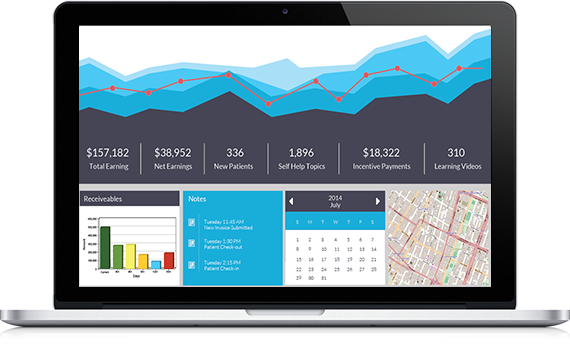
FAQ's
Talk to our Consultant >MACRA (Medicare Access and CHIP Reauthorization Act) is a federal legislation signed into law in 2015. It affects healthcare reimbursement because it repeals the sustainable growth rate (SGR) formula which determines Medicare reimbursements; it creates a new framework for rewarding health care providers for giving better care; and it combines existing quality reporting programs into one new system.
The Quality Payment Program implements key provisions of MACRA by introducing new ways to reimburse physicians who provide care for Medicare Part B beneficiaries, shifting from the current fee-for-service model to value-based care. The Quality Payment Program establishes two reimbursement tracks: Merit-based Incentive Payment System (MIPS) and Advanced APMs (AAPM).
The majority of clinicians who bill Medicare Part B are impacted by the Quality Payment Program. CMS is also inviting commerical payers to join the MIPS model in upcoming years.
CureMD has a MIPS consulting team that can assist. Please call 717-680-8500 or e-mails us at qp@curemd.com
The Merit-based Incentive Payment System (MIPS) is one of two new payment tracks established by MACRA. It combines parts of the Physician Quality Reporting System (PQRS), the Value Modifier (VM or Value-based Payment Modifier), and the Medicare Electronic Health Record (EHR) Incentive Program into a single program. Eligible Clinicians will be scored on quality, cost, improvement activities, and meaningful use of certified EHR technology and a threshold set by CMS will determine whether clinicians receive a positive [bonus] or negative [penalty] payment adjustment.
The composite performance score is the aggregate of an eligible clinician's scores in the four performance categories (quality, cost, advancing care information, improvement activities). The score will be compared to a yearly threshold that CMS will set and determine either a positive, negative or neutral payment adjustment. Under MIPS, payment adjustments will start from 4% in 2019 and gradually incease to 9% by 2022 onwards.
Only 6 measures are required instead of 9 under PQRS, one of which should be an outcome measure. If an outcome measure is not applicable, a high-priority measure can be reported instead.
CureMD has a MIPS consulting team that can assist. Please call 717-680-8500 or e-mails us at qp@curemd.com
Clinicians without an EHR can still participate in MIPS, but will not be eligible for any of the points under the PI performance category. For 2026 PI constitutes 25% of the total score, so not using an EMR makes it significantly difficult to score better than your peers.
Talk to our Quality Payment Program specialists to learn how we can help.



